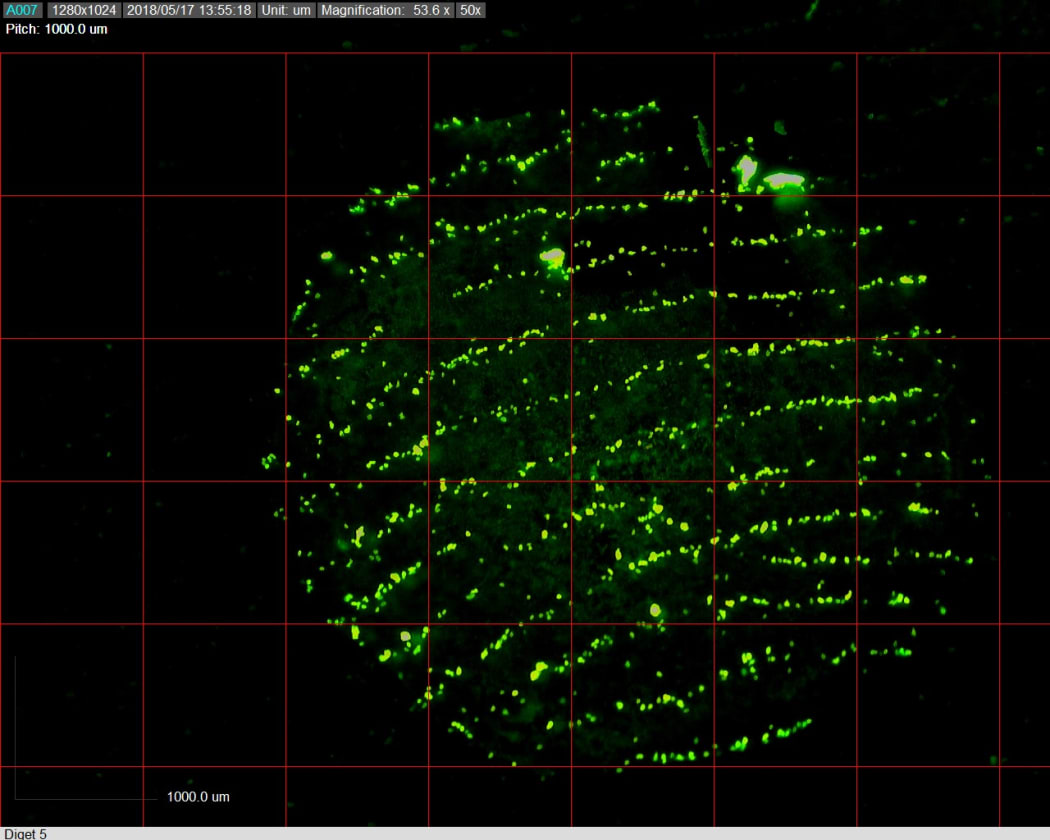Picture forensic investigators working at a crime scene. Someone is dusting for fingerprints in likely areas such as door handles and a knife. Others are looking for sites where DNA might have been left and are swabbing those areas in the hope of finding useful DNA.
Now imagine one person doing both things at once. The investigator sprays a dye on the door handle and holds a blue LED light and a small hand-sized microscope over it. Several well-defined fingerprints come into view on the computer screen, covered in bright dots, like stars in a sky.

A fluorescent dye highlights DNA left on a fingerprint. Photo: Alicia Haines / ESR
Subscribe to Our Changing World for free on Apple Podcasts, Spotify, Stitcher, RadioPublic or wherever you listen to your podcasts
Bingo! Not only are there useful fingerprints, but there is also enough DNA to collect and analyse – with the added bonus that DNA is clearly linked to the fingerprints.
This technique is not yet in use at crime scenes but is currently the subject of a research project by senior technician Alicia Haines, at the Institute of Environmental Science and Research (ESR). The research builds on work that Alicia began at Flinder’s University in Australia.

ESR researcher Alicia Haines with a handheld microscope connected to a computer showing an image of fluorescent DNA in a fingerprint. Photo: RNZ / Alison Ballance
Alicia says she has been investigating a fluorescent dye that binds to DNA and allows the DNA to be visualised under a fluorescent light.
“If you’ve got a finger mark you’ll be able to spray the area with this dye solution and see if there is any DNA present,” says Alicia.
People shed different amounts of DNA depending on a range of factors, including how long it is since they washed their hands, how sweaty they are and whether they have recently touched areas of their body such as their face.
During the research Alicia got volunteers to deposit fingerprints on glass slides, so she could validate the process.

The amount of DNA that fingerprints carry depends on the person and other factors such as how long ago they washed their hands. Photo: Alicia Haines / ESR


